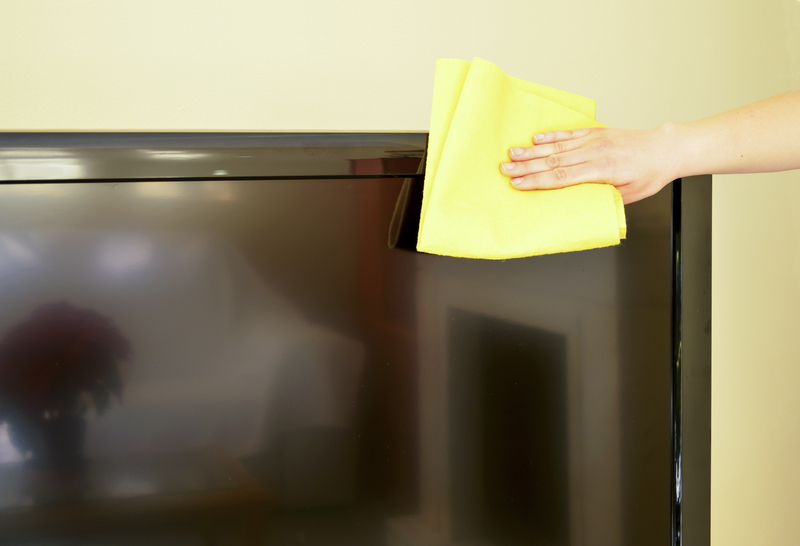Invisible yet vital: The role of air quality in daily life
Posted on 25/06/2025
Invisible Yet Vital: The Role of Air Quality in Daily Life
Have you ever taken a moment to ponder the quality of the air you breathe every second of every day? Often unnoticed and frequently taken for granted, air quality profoundly influences our health, comfort, and overall well-being. While water, food, and shelter dominate daily concerns, the invisible blanket enveloping us--the air we breathe--plays an indispensable, though often overlooked, role in our quality of life.
What is Air Quality?
Air quality refers to the cleanliness or pollution level of the air we breathe. It's measured by assessing the quantity and types of pollutants, such as:
- Particulate Matter (PM2.5 and PM10)
- Nitrogen Dioxide (NO2)
- Sulfur Dioxide (SO2)
- Ozone (O3)
- Carbon Monoxide (CO)
- Volatile Organic Compounds (VOCs)
Factors Representing Good vs. Poor Air Quality
Good air quality means the presence of minimal harmful substances, ensuring the air is safe for all living beings to breathe. Poor air quality is characterized by a higher concentration of pollutants, which can pose significant health risks and environmental problems. Air quality is often summarized by the Air Quality Index (AQI), a standardized score communicated in weather reports worldwide.

Why Air Quality is Crucial in Daily Life
The Impact on Health
Perhaps the most urgent reason air quality matters is its direct correlation with health. It affects individuals in numerous visible and invisible ways every day:
- Respiratory diseases: High levels of pollutants can trigger or worsen asthma, bronchitis, and other respiratory ailments.
- Cardiovascular issues: Long-term exposure to poor air quality increases the risk of heart attacks and strokes.
- Developmental disorders: Children exposed to polluted air may suffer from impaired lung development.
- Premature aging and mortality: Studies link unhealthy air to premature aging, reduced life expectancy, and higher mortality rates.
- Weakened immune system: Constant exposure makes the body more susceptible to infections and chronic illnesses.
Air Quality and Productivity
It's not just our health that's compromised. Indoor and outdoor air quality affects our concentration, energy, and productivity. Studies have found that employees working in offices with cleaner air:
- Experience fewer sick days
- Are more alert and productive
- Report improved overall wellbeing
Influence on Comfort and Daily Activities
Beyond its health impact, air quality influences our comfort in subtle ways. Polluted air can cause eye irritation, sore throats, headaches, and fatigue--symptoms often misattributed to other causes.
Good air quality is essential for:
- Enjoying outdoor activities (e.g., jogging, cycling, family picnics)
- Quality sleep, as poor air can cause restlessness and nighttime coughing
- Smoother breathing, especially for the elderly and those with chronic conditions
Sources of Air Pollution in Daily Life
Understanding where pollutants come from is crucial for improvement. The air within our homes and workplaces can be as polluted--sometimes more so--as the air outside. Common sources of indoor air pollution include:
- Cooking, especially with solid fuels or gas appliances
- Cigarette and tobacco smoke
- Household cleaners, paints, and synthetic fragrances (VOCs)
- Poorly ventilated stoves and fireplaces
- Mold, dust mites, and pet dander
- Vehicle emissions
- Industrial activities and power plants
- Construction dust
- Burning of waste and agricultural residues
- Natural events (e.g., wildfires, dust storms)
Air Quality in Urban vs. Rural Settings
The Urban Air Dilemma
Cities are hotspots for air pollution due to population density and higher volumes of traffic and industrial activities. Urban dwellers are often exposed to higher levels of pollutants, increasing health risks substantially compared to rural areas. Skyscrapers and limited green spaces also inhibit natural air circulation, exacerbating smog buildup.
Rural Air Quality: Not Always Pure
While often considered havens of clean air, rural areas are not immune to air quality problems. Common rural air pollutants include:
- Pesticide and fertilizer drift from agricultural fields
- Smoke from crop burning and wood stoves
- Dust from unpaved roads and animal husbandry
Assessing and Monitoring Air Quality
To understand and manage air pollution's effects on daily life, continuous monitoring is essential. Today, several resources are available to the public:
- Governmental air quality monitoring stations
- Real-time air quality apps and websites (e.g., AQICN, AirVisual)
- Personal air quality monitors for homes and individuals
Understanding the Air Quality Index (AQI)
The Air Quality Index is a standardized system used worldwide to communicate the level of air pollution. An AQI value:
- Between 0-50 means good air quality
- 51-100 is moderate
- 101-150 is unhealthy for sensitive groups
- 151-200 is unhealthy for everyone
- Above 200 is very unhealthy to hazardous
Invisible Threats: Unseen Pollutants and Their Impact
Some of the deadliest air pollutants are invisible and odorless. For instance, carbon monoxide can cause death without warning, as it has no color, taste, or smell. Fine particulate matter (PM2.5) easily bypasses the body's natural defenses, penetrating deep into the lungs and bloodstream, increasing the risk of cardiovascular and respiratory diseases.
How to Protect Yourself and Improve Air Quality
Personal Precautions for Better Health
Empowering yourself with knowledge about air pollution and air quality in your area enables you to take simple yet effective measures to protect your health:
- Check air quality forecasts and limit outdoor activities during high pollution days
- Keep windows closed and use air purifiers, especially during nearby fires or peak traffic hours
- Shift exercise routines to times and locations with cleaner air, such as early mornings or parks
- Avoid smoking and reduce exposure to secondhand smoke
- Ventilate your home during less polluted days
Improving Indoor Air
Since we spend over 80% of our time indoors, improving indoor air quality is essential:
- Regularly clean and vacuum to reduce dust and allergens
- Use exhaust fans in kitchens and bathrooms
- Bring air-purifying houseplants into the home
- Fix sources of leaks promptly to prevent mold growth
- Minimize the use of toxic cleaning agents and opt for natural alternatives
Community and Policy Efforts
Air quality is a collective responsibility. Participating in and supporting policy changes and community initiatives can make a significant impact:
- Advocating for greener public transportation and reduced vehicular traffic
- Supporting reforestation and urban green belt projects
- Encouraging stricter industrial emission standards
- Participating in clean-up drives and awareness campaigns
The Role of Technology and Innovation
Advances in technology offer hope for tackling air quality issues. Smart air purifiers, greener vehicles, alternative energy sources, and low-emission infrastructure are all making it easier to fight the negative effects of air pollution. Moreover, digital sensors and Internet of Things (IoT) devices allow for real-time feedback, empowering everyone--from urban planners to concerned citizens--to make informed decisions.
Air Quality Around the World
Globally, air quality levels and the challenges communities face can vary dramatically. Some cities, like Singapore and Helsinki, boast exemplary clean air due to rigorous environmental policies. Others, such as Delhi and Beijing, battle hazardous pollution from heavy traffic, burning of fossil fuels, and rapid urbanization.
Interesting fact: Wind patterns, climate, and geographical features can trap pollution, meaning even the cleanest regions can occasionally face hazardous air episodes.

Frequently Asked Questions About Air Quality in Daily Life
- How often should I check my local air quality?
Daily, especially in high-traffic or industrial areas, or if you belong to sensitive groups such as young children, the elderly, or individuals with respiratory conditions. - Can plants really improve indoor air?
Yes, many houseplants like spider plants, peace lilies, and snake plants help remove common toxins, though they shouldn't replace proper ventilation. - Is indoor air quality always better than outdoor air?
Not always. Indoor air can be several times more polluted, especially in poorly ventilated spaces or where harmful chemicals are used. - What are the main signs of poor air quality at home?
Frequent coughing, eye and throat irritation, musty smells, visible mold, and excessive dust buildup can all be warning signs.
Conclusion: Breathing Life into Awareness
Air quality may be invisible, but its significance in our daily lives is unmistakably real. From affecting our physical health to influencing our moods, productivity, and even life expectancy, the air surrounding us shapes who we are and how we live--often without our conscious awareness.
By acknowledging the vital role of air quality and proactively seeking to improve it, we can foster healthier lifestyles and create more livable communities. Breathe easy, act wisely, and remember: every breath counts.
For more information on the impact of air pollution and air quality in daily life, consult your local environmental agency or health authorities, and take the first step toward safeguarding the invisible, indispensable resource that sustains us all.




